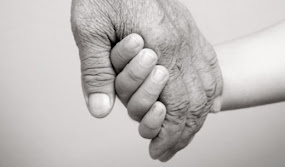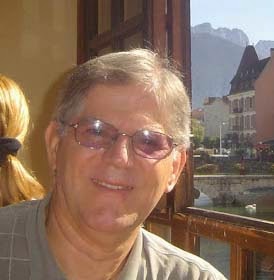
By
Madeleine Kando
It’s early here in Kauai. A group of nenes waddle across the lawn in front of our lanai. Behind them, the blue ocean shimmers in the morning sun. In the hazy distance, Mount Makana, also known as Bali Hai, stands guard over her dominion, making sure everything is as it should be.
God must have had Kauai in mind when he created the concept of ‘beauty’. It is a sensory paradise. The oldest island in the Hawaiian chain, Kauai has had time to turn into a lush, green garden island. The trade winds make sure temperatures are never too hot or too cold and constantly envelops your skin with a silken touch.
A bright green gecko with red warpaint on his back is on a warpath across the wall. He watches me and is as curious about me as I am of him. He catches a bug and licks his chops, waits, catches another one. An identical copy appears. They now confront each other. Two minuscule warriors competing for a morning breakfast.
Suddenly, one of the nenes screeches as he spreads his large wings and runs at high speed across the lawn. I see the shadow of a black cat disappear in the brush. But in an instant everything is back to its peaceful state. The feral cat population on this island is obviously not on good terms with the nenes.
We prepare for our first snorkel adventure and choose to go to Anini Beach, where the surf is mild and entry fairly easy. My 10 year old grandson Marshall, his mother and I wade into the waves. The water is warm and as we flutter kick our way closer to the reef, hundreds of tiny yellow finned goatfish encircle us, turning the water into a silver cloud. I hold Marshall’s little hand in mine and we forge our way closer to the reef.
In the crevices, we see the famous trigger fish (Humuhumu), with its blue mustache and triangular shape. He doesn’t seem to appreciate our presence and emits a plume of milky dust in his wake as he swims away. There are bright yellow tang fish and the impressive parrot fish (Uhu in Hawaiian). These are in their bright blue male phase and are known to keep a harem of females. When the male dies, the alpha female of the harem switches sex, becoming a male herself.
Further towards the sandy bottom, we see a group of totally black triggerfish. As one of them turns, a gorgeous blue and green line radiates from its eyes. As he swims away, tossing its fins back and forth like a flamenco dancer’s skirt, my breath is taken away: a neon blue halo appears along his entire body.
We turn a bend in the reef. Suddenly, Marshall points at something, frantically waving to me to come closer. Then, I see it: two larger white and black striped damsel fish are being attacked by a group of smaller, brightly colored tamarind fish. One even pushes its nose under a damsel fish’s gill. As we look closer, we realize that we are looking at a cleaning station. These larger fish are actually being cleaned by the smaller fish, removing parasites and getting a meal in return.
Snorkeling is like a drug. It opens a door on a different world. Even in my diving days, what we saw did not match the variety of colors and shapes that one sees closer to the shore. The corral must have been a lot healthier before tourism caused it to deteriorate, but the island is now limiting access to the northern beaches, giving the corral and reef fish a chance to regenerate.
Like hundreds of others, we are here as a family, enjoying one of the most unique locations on earth. The nenes and the mynah birds know this. Their loud screeching tells us: ‘We allow you to be here, as long as you behave yourself. As long as you respect what is around you.’
Hawaii not your run of the mill volcanic islands. Usually volcanic eruptions happen where two tectonic plates meet, but the Hawaiian-Emperor Seamount chain sits right in the middle of the Pacific Plate and reaches all the way to Siberia. The source of its enormous volcanoes is a hotspot that originates deep in the center of the earth. The Pacific plate slowly moves towards the North American Plate and slides under it (subducting) at a rate of 7 inches a year.
Imagine a sheet of thick cardboard that slides over a blow torch. Every time the blow torch ignites, it melts the underside of the sheet and eventually burns a hole, pushing the molten lava through it, thus creating a volcano. Hawaiian volcanoes were formed very slowly, creating huge dome shaped mountains, resembling warrior’s shields, hence they are known as shield volcanos.
Kauai is the old lady of the bunch and is slowly being eroded. Traveling south, to the other Hawaiian islands, you can see how Kauai looked like millions of years ago. The Big Island is still in its infancy. It is black, steaming and glowing with fresh lava. As you travel north, there is Maui still young, only about a million years old, but already covered with lush vegetation. Further up, towards the Asian continent, you peer into Kauai’s future. This beautiful old lady will shrink, until it turns into an Atoll and will finally completely disappear under the waves.
Waimea
Today is our ‘Waimea’ day. We drive to the other side of the island to Waimea canyon. Also known as ‘the Grand Canyon of the Pacific’, Waimea is a spectacular gorge, roughly 3,600 feet deep and 10 miles long. Here you can witness the island’s turbulent past.
As we drive up the winding road from the town below, we see the island of Nihau in the hazy distance. They call it the forbidden island because only native Hawaiians are allowed to live there. At mile marker 14, we drive our jeep onto a hunters’ trail called the ‘Miloli’I Ridge Road’. It is supposed to be drivable all the way to the end point, 5 miles down, with a stunning view of the Napali Coast, but half way in, the tossing and jostling becomes too much and we decide to hike the rest of the way. The scent of eucalyptus and guava fruit accompanies us. We stop half way down at a picknick area and eat our Subway sandwiches, washing it down with Hawaiian beer.

As we huff and puff our way back, uphill this time, a red dust covered pickup passes us. In the cargo bed, we see a dead bloody wild boar, with his legs dangling over the side. Well, this is a hunter’s trail after all. It wasn’t put there for the benefit of soft-hearted tourists from Boston.
The Napali
We decide to pay a small fortune to go on a Napali Coast Boat Tour. We meet at Anini beach, where we leave our flip flops in a basket and wade through the shallow water to board the small catamaran. The engines rev to take us out to deeper waters and we begin the trek around the Napali Coast. The water glistens in the morning sun and the coastline become more and more beautiful. We enter caves carved out by the surf, starboard we see a turtle lazily bob up and down on the waves.
The captain points up to a narrow red line on the cliff. That is the notorious ‘crawlers’ ledge’ on the Napali trail. At this point, the trail is so narrow that hikers literally have to crawl on hands and knees. I hope I will come back as a mountain goat in my next life, so I can enjoy the Napali without having to crawl on hands and knees. We see boobie birds nesting, a goat here and there, but mostly the majestic cliffs. There is no better way to see this coastline than from the ocean side.
On the way back, the boat is being slammed down hard, we get tossed left and right , sprayed clean and I silently offer a small prayer to Mr. Dramamine. The boat gets pulled onto the boat ramp, passengers and all and we put our flip flops back on, unforgettable images floating in our heads for days to come.
We are facing North West, the perfect direction for the famous Kauai sunset. A rain storm is approaching the island, inching its way closer over the water, but on the land side, the sky is blue with small fluffy clouds. Bali Hai is half hidden, bursting with moisture. The sun emerges from behind the overhanging clouds, the entire firmament ablaze with an indescribable array of colors: purple, orange, gold, bluish grey. No amount of words can do this sunset justice, even the nenes take time out from munching the grass to watch it.














